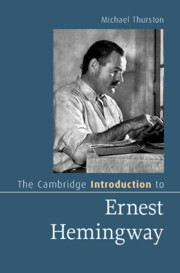Refine search
Actions for selected content:
557 results
Chapter 1 - Reading and Revising the 1990s
-
- Book:
- The Cambridge Introduction to Queer and Trans Studies
- Published online:
- 24 November 2025
- Print publication:
- 18 December 2025, pp 19-53
-
- Chapter
- Export citation
Real Dehumanization
-
- Journal:
- Journal of the American Philosophical Association , First View
- Published online by Cambridge University Press:
- 24 November 2025, pp. 1-19
-
- Article
-
- You have access
- Open access
- HTML
- Export citation
9 - Equality
- from Part III - Statutory Regulation of the Employment Relationship
-
- Book:
- Labour Law
- Published online:
- 02 October 2025
- Print publication:
- 20 November 2025, pp 329-382
-
- Chapter
- Export citation
7 - Equality and Non-discrimination
-
- Book:
- The Law and Practice of International Administrative Tribunals
- Published online:
- 27 October 2025
- Print publication:
- 13 November 2025, pp 208-243
-
- Chapter
- Export citation
Caring Like a State: Publicizing Family Caregiving through Medicalization
-
- Journal:
- Law & Social Inquiry , First View
- Published online by Cambridge University Press:
- 05 November 2025, pp. 1-33
-
- Article
-
- You have access
- Open access
- HTML
- Export citation
National digital ID apps and disability: towards an agenda for digital inclusion?
-
- Journal:
- Data & Policy / Volume 7 / 2025
- Published online by Cambridge University Press:
- 29 October 2025, e74
-
- Article
-
- You have access
- Open access
- HTML
- Export citation
The Subject Position and Network Entrepreneurship of Parent Organizations in China
-
- Journal:
- The China Quarterly , First View
- Published online by Cambridge University Press:
- 21 October 2025, pp. 1-17
-
- Article
-
- You have access
- Open access
- HTML
- Export citation
Kōmei School and the Path to Compulsory Education for Japan’s Children with Disabilities
-
- Journal:
- Asia-Pacific Journal / Volume 23 / 2025
- Published online by Cambridge University Press:
- 06 October 2025, e15
-
- Article
-
- You have access
- Open access
- HTML
- Export citation
Introduction
-
- Book:
- The Cambridge Introduction to Ernest Hemingway
- Published online:
- 15 September 2025
- Print publication:
- 02 October 2025, pp 1-2
-
- Chapter
- Export citation
Chapter 1 - Life
-
- Book:
- The Cambridge Introduction to Ernest Hemingway
- Published online:
- 15 September 2025
- Print publication:
- 02 October 2025, pp 3-20
-
- Chapter
- Export citation
Chapter 6 - Men (and Women) at War
-
- Book:
- The Cambridge Introduction to Ernest Hemingway
- Published online:
- 15 September 2025
- Print publication:
- 02 October 2025, pp 119-144
-
- Chapter
- Export citation
Chapter 3 - Crafting a Style
-
- Book:
- The Cambridge Introduction to Ernest Hemingway
- Published online:
- 15 September 2025
- Print publication:
- 02 October 2025, pp 31-63
-
- Chapter
- Export citation
Chapter 4 - Consolidating a Career
-
- Book:
- The Cambridge Introduction to Ernest Hemingway
- Published online:
- 15 September 2025
- Print publication:
- 02 October 2025, pp 64-86
-
- Chapter
- Export citation

The Cambridge Introduction to Ernest Hemingway
-
- Published online:
- 15 September 2025
- Print publication:
- 02 October 2025
Chapter 4 - The Gift of Social Work
- from Part I - Storying-to-Learn: How Stories-that-Matter Help Us Appreciate Social Work in Action
-
-
- Book:
- Learning through Social Work Stories-That-Matter
- Published online:
- 28 August 2025
- Print publication:
- 11 September 2025, pp 46-57
-
- Chapter
- Export citation
Chapter 9 - Stand-Up Comedy, Disability, and Social Justice
- from Part II - Interpretation and Meaning
-
-
- Book:
- The Cambridge Companion to Stand-Up Comedy
- Published online:
- 21 August 2025
- Print publication:
- 04 September 2025, pp 175-188
-
- Chapter
- Export citation
“Only Connect!”: Bridging Disability Education and Public Humanities
- Part of
-
- Journal:
- Public Humanities / Volume 1 / 2025
- Published online by Cambridge University Press:
- 01 September 2025, e128
-
- Article
-
- You have access
- Open access
- HTML
- Export citation
5 - The Chernobyl Children
-
- Book:
- Chernobyl Children
- Published online:
- 26 June 2025
- Print publication:
- 14 August 2025, pp 224-284
-
- Chapter
- Export citation
2 - Law’s Response to Disfigurement Inequality
-
- Book:
- Appearance, Disability and the Law
- Published online:
- 31 July 2025
- Print publication:
- 14 August 2025, pp 10-26
-
- Chapter
- Export citation
Chapter 5 - Love Your Neighbor (Leviticus 17–22)
-
- Book:
- The Theology of the Book of Leviticus
- Published online:
- 18 July 2025
- Print publication:
- 07 August 2025, pp 157-202
-
- Chapter
- Export citation
